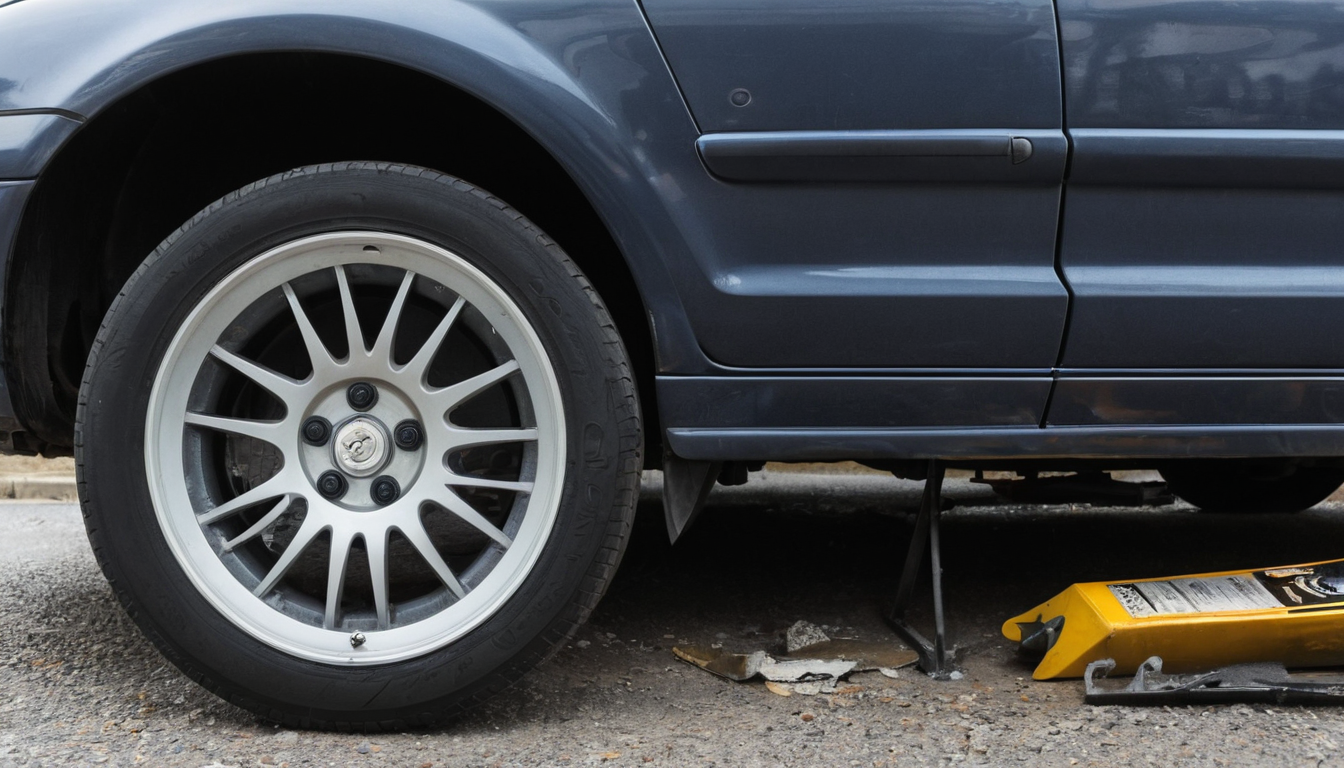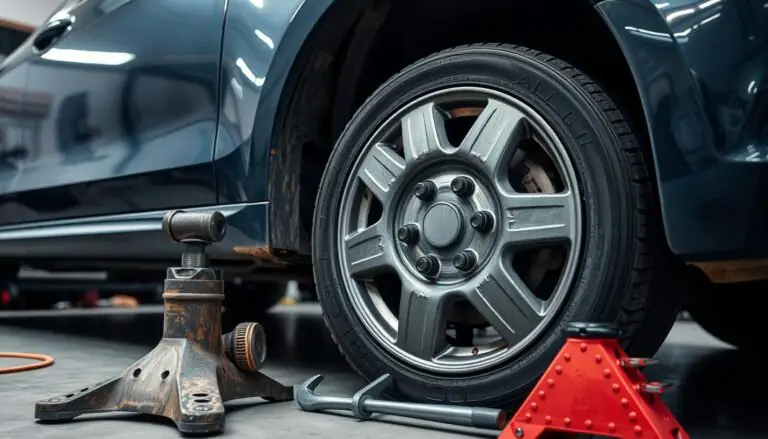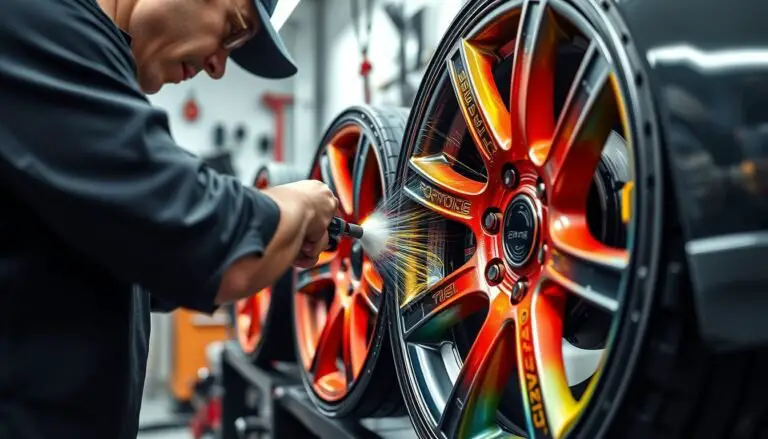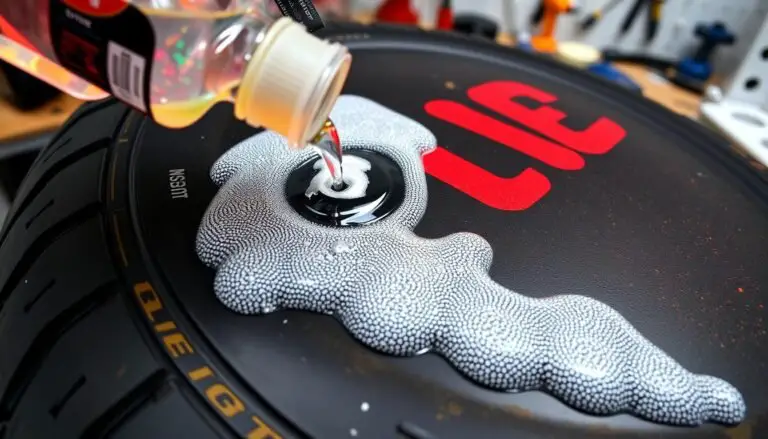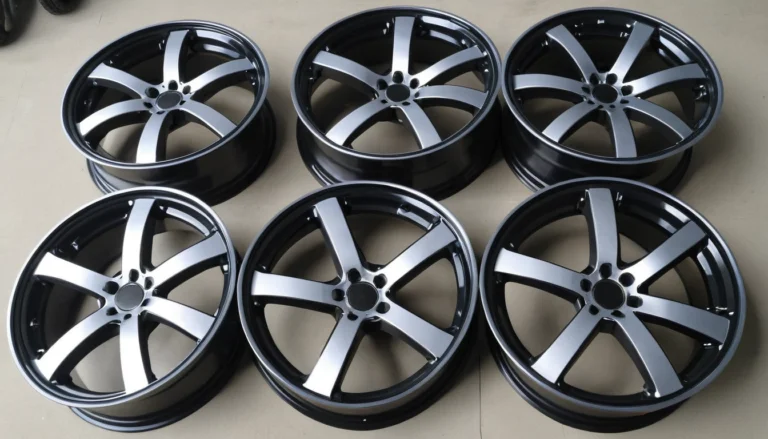7 Warning Signs Your Car Wheels Need Replacement
Maintaining the safety and performance of your vehicle is a top priority for any responsible car owner. One crucial aspect of this maintenance is ensuring that your car’s wheels are in good condition and replaced when necessary.
Neglecting to replace your wheels when they show signs of wear or damage can lead to a host of problems, from decreased fuel efficiency to compromised handling and even accidents. By familiarizing yourself with the warning signs that indicate it’s time for new wheels, you can take proactive steps to keep your vehicle running smoothly and safely.
In this article, we’ll explore seven key indicators that your car wheels need replacement. From visible cracks and damage to uneven tire wear and beyond, understanding these signs will help you make informed decisions about your vehicle’s maintenance and safety.
Visible Cracks or Damage on the Wheel Surface
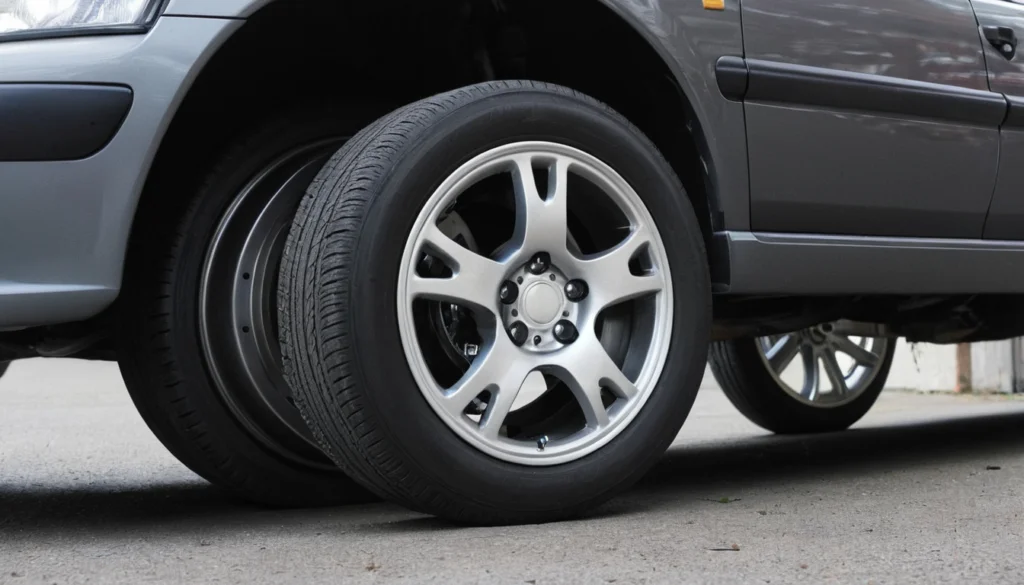
One of the most obvious signs that your car wheels need replacement is the presence of visible cracks or damage on the wheel surface. Even small cracks can compromise the structural integrity of the wheel, making it more susceptible to failure under stress.
It’s essential to inspect your wheels regularly for any visible fractures or fissures. Pay close attention to the areas around the lug nut holes and the wheel spokes, as these are common locations for cracks to develop.
If you spot any cracks during your inspection, it’s crucial to replace the affected wheel immediately. Continuing to drive on a cracked wheel can lead to sudden failure, which can be extremely dangerous, especially at high speeds. Don’t take any chances with your safety—if you see cracks, replace the wheel as soon as possible.
Causes of Wheel Cracks
Several factors can contribute to the development of cracks in your car’s wheels:
- Impact damage: Hitting a pothole, curb, or other obstruction can cause immediate cracks or weaken the wheel, leading to cracks over time.
- Structural fatigue: As wheels are subjected to the stresses of driving, the metal can fatigue and develop cracks, especially in older wheels.
- Manufacturing defects: In rare cases, wheels may have inherent weaknesses due to manufacturing flaws that can lead to premature cracking.
Inspecting for Wheel Damage
To thoroughly inspect your wheels for cracks and other damage, follow these steps:
- Clean the wheels: Wash away any dirt, brake dust, or grime that could obscure cracks or damage.
- Visually inspect each wheel: Carefully examine the entire surface of each wheel, paying close attention to the areas around the lug nut holes, spokes, and rim.
- Use a flashlight: Shining a light at different angles can help reveal small cracks that might be difficult to see in normal lighting.
- Feel for irregularities: Run your fingers over the wheel surface to detect any rough spots, sharp edges, or other irregularities that could indicate damage.
By regularly inspecting your wheels and promptly addressing any cracks or damage, you can help ensure the safety and longevity of your vehicle. Remember, when it comes to wheel safety, it’s always better to err on the side of caution and replace a damaged wheel rather than risk a potentially dangerous failure while driving.
Bent or Deformed Wheel Shape
Noticing a bent or deformed wheel is a clear indicator that replacement should be prioritized. Wheels play a crucial role in ensuring a smooth ride, and any deviation from their intended shape can disrupt this balance. Common culprits for a wheel losing its shape include hard impacts with potholes or curbs, which can cause the wheel to bend, leading to persistent driving discomfort.
Recognizing Wheel Deformation
There are several signs that can help you recognize if your wheels are bent or deformed:
- Increased vibrations: Feeling unusual vibrations through the steering wheel or the car body, especially at higher speeds, could suggest a wheel issue.
- Pulling sensation: If your vehicle tends to drift to one side, it may indicate a wheel deformation affecting the car’s alignment.
For a more thorough check, observe the wheel from different perspectives. A wheel should appear round without any visible distortions or irregularities.
Impact of Driving on a Bent Wheel
Driving with a deformed wheel can have various negative impacts beyond just discomfort:
- Tire degradation: A misshapen wheel can lead to inconsistent tire wear, which shortens the tire’s lifespan.
- Potential suspension strain: The imbalance caused by a deformed wheel can put additional pressure on suspension parts, leading to early wear or damage.
If you suspect a wheel is bent or deformed, consulting with a professional is essential. They can confirm the extent of the issue and recommend the necessary actions to prevent further complications.
Excessive Vibration While Driving
Experiencing excessive vibration while driving is more than just an annoyance—it can signal significant underlying wheel issues. Such disturbances often point to wheels that may have suffered damage or have fallen out of alignment, affecting both the comfort and safety of your drive. Identifying and resolving these issues promptly can prevent further complications and ensure a smoother ride.
Diagnosing Vibration Causes
Identifying the cause of vibrations is crucial for effective resolution. Consider these common sources:
- Unbalanced wheels: Wheels that lose balance can cause noticeable shaking, particularly at increased speeds. This imbalance often arises from uneven weight distribution or missing wheel weights.
- Structural damage: Physical damage, such as cracks or deformations, disrupts the wheel’s natural harmony, leading to pronounced vibrations.
To accurately diagnose the issue, observe when and where the vibrations occur. For instance, vibrations felt primarily through the steering wheel often indicate front wheel problems, while those sensed through the seat may suggest rear wheel issues.
Mitigating Vibration Issues
Once the source of vibration is identified, taking corrective action is essential. Here are steps to consider:
- Professional wheel balancing: This service corrects imbalance by ensuring even weight distribution across the wheel, effectively eliminating vibrations caused by imbalance.
- Detailed inspection: Conduct a thorough examination to detect any structural damage. Replacing compromised wheels is often necessary to maintain safety and performance.
Addressing vibrations not only enhances ride comfort but also protects vehicle components from premature wear. By taking these steps, you ensure that your vehicle remains in peak condition, offering a safe and enjoyable driving experience.
Visible Corrosion or Rust on the Wheel

Corrosion and rust on wheels signal potential structural issues that can affect vehicle safety. Regular exposure to moisture and road elements accelerates rust formation, particularly in areas where protective finishes have worn away. This corrosion weakens the wheel’s metal, increasing the likelihood of failure when under load.
Identifying Corrosion Hotspots
Certain areas of the wheel are particularly vulnerable to rust and require close inspection:
- Lug Nut Holes: These are critical for secure attachment. Rust in these areas can compromise the wheel’s stability and safety.
- Rim Edges: Frequently exposed to road debris and elements, these edges are prone to rust accumulation.
- Inner Wheel Surface: Though less visible, this area can corrode and weaken, impacting the wheel’s structural integrity.
Regular cleaning and protective treatments can help prevent rust, but once it appears, it’s important to evaluate the extent and potential impact on safety.
Assessing the Severity of Corrosion
Determining the severity of rust involves careful evaluation:
- Surface Rust: Often superficial, it can sometimes be treated with rust removers and protective sprays. However, monitoring is crucial to prevent progression.
- Structural Rust: When rust penetrates deeper, affecting the wheel’s strength, replacement becomes necessary to ensure safety. Structural rust can lead to failure under stress.
Understanding wheel corrosion and taking proactive measures helps maintain vehicle performance and safety. Regular inspections and timely interventions are essential for effective rust management, ensuring wheels remain reliable throughout their lifespan.
Leaking Air from the Tire
Recurring air loss in tires often signals underlying issues with the wheel’s condition. While punctures are a frequent cause, damage to the wheel itself can also lead to persistent leaks. The rim may become misaligned or deformed, disrupting the seal between the tire and the wheel, which allows air to escape.
Identifying Sources of Air Leaks
When dealing with continuous air loss, accurately identifying the cause is crucial for effective resolution:
- Rim Imperfections: Impacts or corrosion can cause rims to lose their flush fit against the tire, leading to air leakage. A careful examination can determine if the rim is responsible.
- Compromised Valve Stems: Over time, valve stems can wear down, leading to air loss. It’s important to consider this possibility during the inspection process.
A comprehensive assessment involves checking both the wheel and tire for signs of damage, ensuring a thorough approach to resolving air loss issues.
Addressing Persistent Air Loss
Once the source of air leaks is identified, taking corrective steps is vital to maintaining tire health and vehicle performance:
- Rim Repair or Replacement: If rim imperfections or severe damage are confirmed, fixing or replacing the rim can restore a proper seal and prevent further air loss.
- Valve Stem Replacement: If the valve stem is the issue, replacing it can effectively resolve air loss problems and ensure airtight integrity.
Addressing air leaks promptly safeguards against the risks associated with under-inflated tires, such as reduced fuel efficiency, increased wear, and compromised handling. Properly addressing these issues enhances both safety and performance on the road, maintaining the vehicle’s reliability and comfort.
Uneven Tire Wear
Uneven tire wear remains a critical indicator of underlying issues such as wheel misalignment or damage, which can compromise vehicle handling and safety. When wheels are not properly aligned, they create inconsistent pressure across the tire surface, leading to premature wear in certain areas. This not only affects the vehicle’s traction but also its overall safety.
Identifying Irregular Wear Patterns
Recognizing specific wear patterns can help pinpoint the root cause of the problem:
- Cupping or Scalloping: Appears as a series of dips or scallops around the tread edge, often caused by suspension issues or balance problems.
- Feathering: Tread ribs become smooth on one side and sharp on the other, typically resulting from improper toe alignment.
- Center Wear: Accelerated wear in the tire’s center can indicate over-inflation, which causes the middle section to bear most of the load.
- Edge Wear: Excessive wear on the inner or outer edges may suggest under-inflation or camber misalignment, both requiring adjustment to avoid further damage.
Mitigating Uneven Tire Wear
To prevent uneven tire wear, establish a routine inspection process, focusing on the tread and sidewalls for signs of irregular patterns. If any unusual wear is detected, consult with a professional to identify and rectify the root cause, whether it be misalignment or suspension issues.
Maintaining the correct tire pressure is essential for even wear—follow the manufacturer’s guidelines for optimal inflation. Regularly rotating the tires also helps distribute wear more evenly across all tires, thereby extending their usable life. By adhering to these practices, you can enhance tire performance, improve vehicle safety, and ensure a smoother driving experience.
Wheels Exceeding Recommended Age
Wheels have a lifespan that eventually reaches its limit due to material fatigue and environmental exposure. Over time, wheels can lose their structural integrity, even if no visible damage is present. This gradual degradation poses an increased risk for potential issues on the road.
Assessing Wheel Longevity
Knowing how long your wheels have been in use is essential for preventative maintenance. Each wheel has a manufacturing date marked on it, usually imprinted on the inner rim surface. This date is crucial for determining the wheel’s age and deciding when a replacement is necessary. Industry guidelines often suggest that wheels undergo thorough inspections after a certain number of years, typically around 6 to 10, depending on the driving conditions and maintenance.
- Regular evaluations: Periodically assess wheels for any signs of wear or age-related damage to ensure continued safety.
- Follow expert advice: Use industry standards and manufacturer guidelines to inform decisions about wheel replacements.
Benefits of Timely Replacement
Replacing wheels before they reach an advanced age ensures both safety and optimal vehicle performance. Aging wheels might conceal internal weaknesses, making them more prone to failures that could compromise safety. Proactive replacement prevents these risks, maintaining your vehicle’s reliability.
- Safety first: Timely replacement of older wheels reduces the likelihood of unexpected failures.
- Performance improvement: New wheels enhance driving dynamics, contributing to better handling and efficiency.
By keeping track of your wheels’ age and condition, you can strategically replace them, ensuring that your vehicle remains safe and performs well on the road.
While these seven signs are crucial indicators that your car wheels may need replacement, it’s always best to consult with a professional if you have any doubts about your wheels’ condition. At Car Wheel Blog, we are dedicated to providing you with the most up-to-date and accurate information to keep you safe on the road. Read More about wheel maintenance and safety tips from our team of experts.

